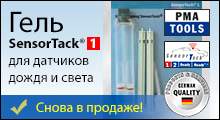| АВТОСТЕКЛА: продажа автостекол, доставка и установка автостекол в Москве |
в мире автостекол
| Email для связи: |
НОВЫЕ ПОСТУПЛЕНИЯ Пластиковый скребок с ручкой для удаления наледи на автостекле 
240 руб.
СПЕЦ. ПРЕДЛОЖЕНИЕ Комплект скотчей на акриловой основе круглого типа разного диаметра для линз датчиков дождя/света. Комплект А5 (5шт) 
1 284 руб.
А ЗНАЕТЕ ЛИ ВЫ, ЧТО... В 80-годах прошлого столетия автомобильные дизайнеры сделали важный шаг к преодолению обледенения стекол и ввели в опции автостекол обогрев стекла.
|
2009 Audi A42009 Audi A4.Windshield removal and replacement instructions. Vehicle type: Four-door sedan NAGS numbers*: Windshield part numbers FW2946, pre-applied adhesive system, solar; FW2947, PAAS, rain sensor, solar; and FW2948, PAAS, rain sensor, lane departure warning sensor, solar Helpful tools or supplies: Wire to cut out the windshield Watch for: The top edge of the windshield is exposed and close to the wall of the pinchweld. The PAAS material might protect the wall if the cutout is done carefully. However, if salvage is the goal, it might require special cutout procedures or wire-out tools. *With permission from National Auto Glass Specifications. Call NAGS at 800/551-4012 or visit http://glass.mitchell.com/. A. Windshield 2. Drape the fender with a fender cover and tape up any vulnerable areas on the vehicle to protect against possible damage. Tape up the defroster vents to prevent debris from falling into the openings. 3. To remove the rearview mirror, give it a quarter turn off the pad. 4. If the vehicle is equipped with a rain sensor, remove the sensor by first removing the two-piece decorative cover. Release the retaining clip to remove the sensor from the glass. 5. Remove the windshield-wiper nut covers. 6. Remove the windshield-wiper nuts using a 13-millimeter wrench or socket. Move the wiper arm in an up-and-down motion to break it loose from the post, or use a wiper-puller. Caution: Wipers can sometimes be hard to remove. To avoid stressing the post, use a wiper-puller. 7. Remove the hood bulb strip. Peel the glass edge of the cowl panel out of the lower retainer, and remove the panel. The new glass comes with a pre-applied adhesive system (PAAS), lower cowl retainer and rain sensor bracket. 8. The side moldings are pushed into a retainer attached to the A-pillar with double-sided tape. To remove, carefully pry the lower edge of the molding upwards, continuing up the sides. 9. The top edge of the windshield is exposed and close to the wall of the pinchweld. The PAAS material might protect the wall if the cutout is done correctly. However, if your goal is to salvage the part, it might require special cutout procedures or wire-out tools. Note: Before beginning windshield removal, verify the new windshield is the correct one and the urethanes and primers are current. Never use outdated products as this could jeopardize the structural integrity of the vehicle and the safety of its passengers. Removal 11. Due to the vehicle design, there will be little, if any, contaminants under the PAAS material. Proceed with the cutout. 12. Use the cutting tools of your choice to remove the glass from the adhesive bead, taking care to avoid damage to the walls of the pinchweld. If you use a power tool, lubricate the cutting area with water. Spray the top and sides; then make your cuts. Cutout wire might be necessary due to the glass’ close tolerance to the pinchweld. 13. Take the windshield out of the opening using vacuum cups. Make sure the vacuum cups do not overlap a crack in the glass. Lift the glass and place it on a windshield stand or suitable workstation. Installation 15. Dry fit the new glass to the opening. Mark your glass using a grease pencil or retention molding tape. 16. Place your vacuum cups on the new windshield in the appropriate location. 17. Set the windshield onto the old urethane. 18. With the windshield resting in the opening, make sure it is in the right spot. 19. Adjust both sides to the correct setting, marking the passenger side, then the driver side. Lift the glass and place it on a windshield stand or suitable workstation. 20. Follow the urethane manufacturer’s recommendations for PAAS installations. This vehicle requires high-modulus urethane to restore structural integrity and performance characteristics. 21. Clean the inside of the windshield using a urethane manufacturer-recommended product. Do not touch the bonding area of the windshield after cleaning, prepping or priming it. 22. Wear powder-free Nitrile gloves to protect against harsh chemicals. 23. Apply the glass prep and primer following the urethane manufacturer’s recommendations. 24. Using the tool of your choice, remove the original urethane bead, leaving 1 millimeter-2 mm of existing urethane on the pinchweld. Make sure there are no contaminants and do not touch the pinchweld after prepping the area. 25. Apply the pinchweld primer only to the areas where needed, and follow the urethane manufacturer’s recommendations. Make sure that the primer does not exceed the molding extension. Allow preps and primers to dry as recommended by the urethane manufacturer. 26. Apply a triangular bead of urethane to the same path as the freshly cut urethane on the pinchweld. Before cutting your V-notch, cut the tip off of your nozzle with a nozzle-cutter. With the cut nozzle, measure to the top of the roofline, and at 1/16-inch higher than the roofline, make a mark on the nozzle with a pen or marker. Notch the nozzle up to the marked line; this will give you the appropriate triangular bead. 27. Lift the windshield from the windshield stand or workstation using vacuum cups. Set the windshield on the urethane at the mark you made during your dry fit. Lower the driver’s side of the windshield onto the urethane and line it up with the dry-fit mark; it is now in place. 28. The windshield is now ready to be decked. Press firmly to ensure a good seal. 29. Before re-installing the parts, check for leaks. Use a leak detector to go over the perimeter of the windshield. If you find a leak, apply more pressure or add more urethane to the spot and ensure that the glass makes contact with the wet urethane. 30. Re-install the removed parts in reverse order. 32. Check the operation of the rain sensor and other mechanical options that were removed or displaced. 33. Allow the urethane to cure according to the urethane manufacturer’s recommended cure time before returning the vehicle to the customer. Warning: Disregarding the safe drive-away time that your urethane manufacturer recommends could jeopardize the structural integrity of the vehicle and the safety of its passengers. 34. You have completed the removal and replacement of the windshield.
By Bob Beranek
|







